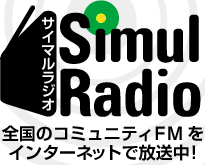Starting and Finishing Lace |  |
| Starting lace | Finishing the lace | |
|---|---|---|
| Start of the pattern Number of bobbins Start working Examples of simple start More complicated starts | End of the pattern Finishing the lace Joining the end to the start |
Starting the lace
The beginner patterns tell you how to start the lace, but once you're past that stage, you have to work out how to do it for yourself! Here are some techniques.
 | Start of the patternFirst you must print your pattern and wind your bobbins. Then you must hang your bobbins on the starting pins. But what are the starting pins? Most pattern only show you the middle of the pattern, so you may have to work out where to start for yourself. Generally speaking, you have a choice, straight across (horizontal) or slanting (diagonal). The diagonal start is the easiest to see in Torchon lace, since this tends to be worked on the slant. Look at the pattern and see if there is anywhere that you can draw a diagonal line without crossing something like a spider (see left). That is your start line (see right). |  |
 | You can have two diagonal lines, making a point (see left). It is harder to find somewhere to draw a horizontal line. You may need to change the start of the pattern a little. Draw a line across the pattern before the start, and mark in ground stitches to take you up to the start of the pattern. Which type of start you use is up to you. Try each one in turn, and see which you like. The old lacemakers were not too concerned about the start of the lace, since they made long pieces which were used for edgings, and these would be cut to measure, so the start was probably cut off before use. Now we tend to make complete small pieces, and so we prefer neater starts. |  |
Number of bobbinsSometimes beginner lacemakers worry about how many bobbins are needed for a pattern, and where they are hung. My beginner patterns tell you exactly how many bobbins to hang from each pin. My other patterns merely tell you how many pairs of bobbins are needed and leave you to work out for yourself where to hang them. Diagonal starts will need one pair of bobbins per starting pin. You will also need one more pair which works across each start pin for the first row; this will be hung from the top pin, so there will be two pairs on this pin. You will also need bobbins for the footside; one pair for the edge, and one pair for the passive in twisted footside or two (or more) for cloth footside. So for the pattern above, the pairs are hung as on the right, making 22 pairs in all. |  |
 | If you have a point, then you still have one pair from most of the pins, but 2 pairs at the point. A horizontal start tends to have two pairs of bobbins hung from each pin, see left. There is no pair working the first row, so the bobbins are hung more symmetrically. You will notice that the count is 22 pairs for all these different arrangements, which is a good thing, as they all start the same pattern! |  |
Don't worry too much about the number of bobbins. Wind and hang the bobbins as you need them. If there are threads going downwards from a pin and you have none available, then you need another pair from that pin, so wind and hang them.
Start working
It's a good idea to start working the bobbins as soon as you have hung them, rather than hanging all of them before you begin. Once you have worked a lace stitch with the threads, then if you jolt or even upset the pillow, you can still sort them out to their original places (with a good light and a lot of patience - I've done it!) However, if they are still hanging on their original pins and you jolt the pillow by mistake, some come off their pins and you have a terrible mess! (I've done that as well, ho hum.)
 | There are some problems about working the first stitches. While it is easier to find a diagonal or pointed line on the pattern to start, it is actually easier to work the start of a horizontal line. Here pins tend to have two pairs of bobbins hanging from them. Make sure that the pairs are twisted round each other (see left). This means that when you take out the pin, the threads will still be connected (see right). If you don't, then they will spring apart as two little loops, which doesn't look so attractive (see far right). |  |
| The problem with a diagonal start is that you hang a pair of bobbins from a pin, and then find that you need to put the pin in again as part of a stitch (a ground stitch, for example). You can't put the pin in again without taking it out, and it has a pair of bobbins hanging from it, and if the threads slide off the pin they drag on the pattern, and it's hard to get the pin back in the right place relative to the threads. The easiest soltion to this is that you work the first row without pins (see right). This leans that when you take the pins out later, there will be little loops at the top. But they are not too noticeable. |  |
The last method is the best, and not too hard. It involves putting an extra row of pinholes just above the normal start holes. These holes could be called false pinholes, since they are not really part of the final lace. Hang the bobbins from these false holes (see below). Work the bobbins as necessary (there aren't any problems as the hanging pins aren't also working pins). When you have worked the complete first row, then remove the false pins, and gently tug the bobbins so the threads descend to hang from the real starter pins.







Examples of simple start
 | On the left is an example of a simple diagonal start. It comes from this hearts pattern. One disadvantage of a simple diagonal start is that the point is rather flimsy. This makes it tend to twist or distort, as has happened here. Still, it is usually easy to find a diagonal line, and if you don't mind that the start of the lace is not as attractive as the rest, then why not! On the right is a two-way diagonal start, making a point. It comes from this open spider pattern. A point near the middle tends to be more robust than a simple diagonal. You don't even need to make the point exactly in the middle. Here, it is slightly to one side, to fit the rest of the pattern. |  |
 | Left is the Kat stitch pattern. This has two diagonal points, again to fit in with the pattern. On the right is an example of a horizontal start, two zigzag pattern. You can see that while I have neatly connected most of the two pairs, I made a bit of a mess of the left-hand side, and left some loops! |  |
 | You don't have to begin a horizontal start with ground stitches. This betterflies patternhas started in the middle of two headsides. |
If you are starting with some quite loose stitches, such as Torchon ground, then you might prefer making the first row a tighter stitch, such as honeycomb stitch. This is cloth stitch, twist both pairs twice, pin, cloth stitch, twist both pairs twice, rather than cloth stitch, twist both pairs, pin, cloth stitch, twist both pairs. The extra twists will make the edge stronger. There are other techniques to improve the starting edge, see below.
More complicated startsI suggest that when you start to make lace, you use one of the simple starts above. However, later you may want to have a neater start, so here are some examples. The first one is a diagonal point, but the footsides on both sides start at the point. This means that four pairs need to be hung from the top pin; you can see that I haven't twisted them round each other enough, and there are two loops. The first row on each side is worked as a twisted footside. The pattern is the snake. The footsides at the point mean that the edge and the point are the same, which is more attractive. |  |
 | On the left is a row (in fact, two rows) of bias ground at the point. The pattern is the pea pattern. Bias ground is narrow strips of cloth stitch. This makes a stronger edge than simple ground. The technique is also used in the Torchon sampler beginner pattern, where it is described in some detail. On the right is another way to make the edge and the point match. A thicker thread has been threaded through the edge of the lace. You could work it as a gimp, but I think in this case, I added it later, with a needle, as the edge and point were so floppy. |  |
 | So far, we have been discussing Torchon lace. This is one of the tallies patterns. The edge is a cloth stitch trail, which bends this way and that as the pattern requires. In fact, there are two trails, one down each edge. They are joined at the top by hanging the bobbins which go both ways from pins across the trail at the top; you can see a bit of a bobble there. |
 | These two Celtic knot examples show that you can get similar effects in different ways. On the left, the points are worked in a conventional Torchon chevron. On the right, there are two trails crossing each other. Each pair from one trail is worked across all of the other pairs in the other trail. |  |
 | These examples deal with a horizontal edge rather than diagonal ones. They hang the bobbins from the starting pins. Then one pair from one edge (doesn't matter which) works across all the other pairs in cloth stitch for a few rows. This makes a very firm beginning to the lace, if rather square looking. On the right, the cloth stitch is continued down the edge as passives headside (without the picots). The patterns are Scottie dogs and flowers. |  |
 | These examples are more complicated. The top of the lace is the same as the headsides down each edge. To start the lace, turn the pillow through a right angle, start in one corner, and work the top as headsides, but hanging bobbins off the bottom of the headside as required by the rest of the pattern. The process is described in greater detail (including sowing where to hang the bobbins), in the descriptions of the cobweb pattern and a wedding garter pattern. |  |
 | This cross is started in a rather strange way. It has the advantage in making the start almost invisible! It starts from the centre and each arm is worked in turn, finishing with a fringe (see below). However, the bobbins are not hung from starting pins. Instead, only one end of the thread is wound onto a bobbin, and a slipknot made in the centre of the thread. The rest of the thread is carefully wound into a loop and pinned out of the way. The slipknot is what is hung from the starting pin, and this pin must be left there and not removed, of course. When one arm is finished, half of those threads have their starting pins removed and their slipknots 'slipped', by tugging them gently. The threads are wound onto bobbins, the other half of the threads are hung from slipknots as before, and the next arm is worked. Similarly for the other arm, and the opposing arm uses entirely slipknot threads. A longer description is given here. You could use a similar technique to make any strip into a cross. It must start in a point, and these four points make the centre of the cross. |
Finishing the lace
End of the pattern
 |  |  | You need to work the lace to a logical finish point. You can have a diagonal line, two diagonals making a point, or some Torchon ground to get to a horizontal line. You may want to have the same shape at the bottom as the top, or a different shape. I often start with a point, but end with a horizontal line. You could just stop at that point, or work a line or more of cloth stitch or a footside, or any of the techniques used for starting the lace working (see above). |
Finishing the lace
The simplest way to finish lace is just to cut off the bobbins, unpin the lace, and there you are! After all, when you buy lace, it has a cut edge. However, a little bit might get unravelled, and you spent time working that bit, and anyway it looks untidy, so you might want a better way. One way is to tie off the threads in knots.
 | First unwind the bobbins for a bit, then cut them off leaving long threads. Then tie knots between threads, or pairs of threads, or larger groups of threads. There is a choice of knots that you can use. If you want to make the knots to be as inconspicuous as possible, then tie each pair of threads as a reef knot, see left. It doesn't even matter if you tie a granny knot by mistake! Then trim the threads close to the knot. See right for an example although I haven't trimmed the threads very much. |  |
 | Another technique is to make a feature of the finish by creating a fringe. Tie the threads in an overhand knot (see left) and when they have all been tied off, trim them to the same length, short or long as you please. An advantage of this is that you can tie more than one pair at a time. I often tie two pairs, round their final pin, in a horizontal line, which I think makes a neat finish, although it's quite possible to have a slanting or pointed end, see right. |  |  |  |
| The idea of a fringe leads to another way to start lace. Sometimes when you have finished a piece of lace, you still have lots of thread left on the bobbins. Thread is cheap, and you can always throw it away. But if you want to finish it up, then you can use it for another bit of lace. But now you have a pair of bobbins not connected, but with two separate threads. You can join these with an overhand knot (or possibly join several pairs together) and then you have a fringe at both ends of the lace, see below: |
 |
Joining the end to the start
If you are making the edge of something like a handkerchief, or a mat, the end may need to be attached to the start. Click here for an explanation on how to do this.






























































































































.jpg)








.jpg)















































.jpg)





































































































No comments:
Post a Comment